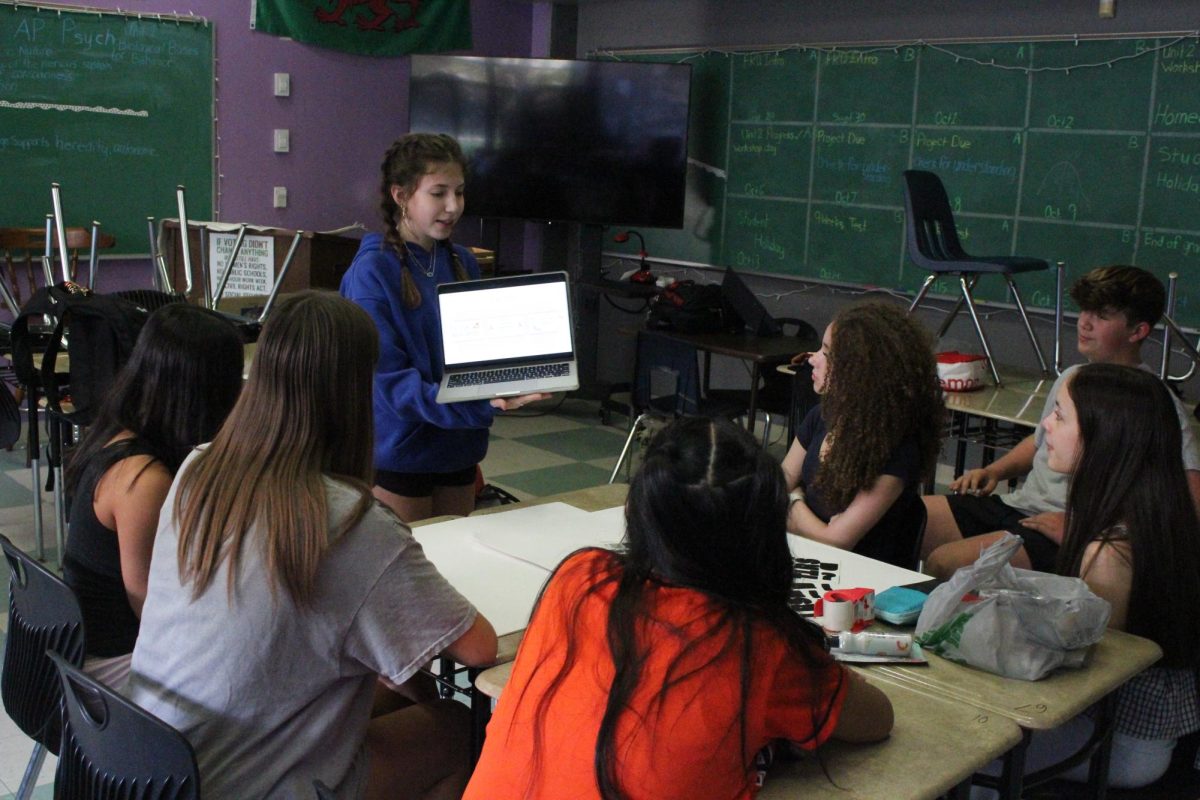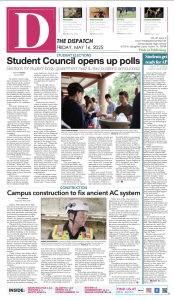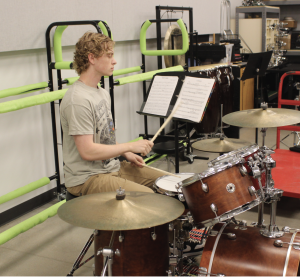FOCUS- on journalism
October 18, 2018
Journalism is ubiquitous. It can be insightful or corrupt, fair or slanted. And in today’s society, it is more present than ever, including in the halls of Bowie.
The mediums vary—with so many resources available now, journalism can take forms such as writing, video, photography, art, design, and more. However, one constant is its purpose: to tell the untold stories of the community.
“Journalism provides a forum for expression,” yearbook adviser Lindsey Shirack said. “Journalism sheds light on the effects of law and policy, holds those in power accountable, builds community by sharing stories and elevates voices. To study journalism is to become a better communicator and a better thinker, which makes students better citizens of our society whether or not their path leads them to continue in journalism.”
Though this takes multiple forms on campus, one platform is the Lone Star Yearbook. Composed of approximately 400 pages, the books cost roughly over $100,000 a year to publish.
“A yearbook’s essential focus is to tell the story of the year, which is complicated because what the year means to one student is vastly different than another’s,” Shirack said.
To complete the book, yearbook students are divided by job duty, including staff writers, content editors, business editors, reference editors, photo editors, people page editors, managing editors, and editor-in-chiefs.
“The aspects of yearbook that people don’t really see is the teamwork that goes into making the book,” junior Mishell Magnus said. “The whole yearbook crew depends on each other because if one doesn’t finish on time the other falls behind and so on.”
Deadlines are set throughout the year for certain parts of the book, often requiring editors to devote time outside of class.
“Even though sometimes it’s really frustrating because staffers are slacking or there’s too many spreads due for one deadline, the reward is huge because you tell a story of a whole school year in a couple hundred pages,” Magnus said.
The same storytelling can also be found in commercial photography, a course designed for students looking to pursue photojournalism as a hobby or career.
“I believe that people impact our community,” commercial photography teacher Judith Cooper said. “Our photos highlight their stories and shine a light on all that is relevant in the community. I believe that these photos validate their accomplishments.”
Through feature stories and active community engagement, all three mediums provide opportunities for students to be recognized.
“There are many students out there that don’t have an opportunity to express their feelings, and I want my staff to be those people for them, to be their advocates,” newspaper adviser Michael Reeves said. “I think everyone has the right to speak, but I think some people are afraid to speak.”
While controversial views or fear of publicity are often factors spurring hesitation in subjects, all students are encouraged to share their views regardless.
“We want varying opinions; we want to know what people truly think of things,” senior newspaper Editor-in-Chief Abby Ong said. “Refusing an interview means the loss of a perspective to a story.”
As journalism began to grow in schools, the Texas Association of Journalism Educators was founded to support new transitioning teachers in the industry.
“Back when TAJE first got started, the intent was to be a network and a place for teachers to go to training,” TAJE President Margie Raper said. “We provide learning opportunities, training opportunities, but really we just provide a resource of peers for any journalism educator to turn to. We are all classroom teachers; we are all journalism educators. We don’t always know all the answers, but we have a heart for kids and we have a heart for teachers and we just want to serve our community and help our community grow and be stronger.”
However, despite efforts to improve, most published works will often still contain mistakes.
“I think that there’s this idea of perfection, that we’re gonna be perfect, and we’re never going to be perfect,” Reeves said. “We do the very best we can to be as accurate as we can, but we’re gonna spell someone’s name wrong. We’re gonna have some misinformation on occasion. People need to know it’s not purposeful, it’s just a mistake.”
Additionally, fallacies and errors are becoming increasingly prevalent with the advancement of accessible media and technology.
“Social media probably brought about the most major change to journalism after the introduction of television and the introduction of the 24-hour news cycle,” Raper said. “We each, especially student journalists, have to be very careful to how we use our voice and to ensure that we are going the extra mile to be credible, to be factual, to be able to back it up to show the evidence because so much information is so quick to access.”
In response, many students are becoming more aware of the effects of “fake news,” both in the local community and nationwide.
“Recent political events keep me more tentative to the news because I love being informed on politics and current events.” senior Taylor Bhuiyan said. “However, it makes me wary of who the news source is, so I stay away from biased sources as much as possible.”
Still, the importance of the work rests in the hands of the reader.
“I’ve heard people disregard the paper, and it can be very disheartening to hear countless hours of work be reduced to nothing in the eyes of some, but at the same time it only motivates me to prove them wrong,” Ong said.
Due to long hours and team building, the journalism classrooms are scarcely empty, and many students find themselves working during FIT, lunch, before/after school, and on weekends.
“I want people to know they have a place on a high school campus and if this is the place for them, I think we develop that relationship and this becomes their place,” Reeves said.
Furthermore, journalism students often walk away with more than a second home—they become equipped with skills that can be applied to multiple aspects of daily life beyond high school.
“There is something when someone says ‘it’s your decision’ to struggle with your own internal morals and your own internal principles, so I think that’s something my students learn by talking with each other and I think that’s really important,” Reeves said.
Regardless of what the future will hold for the face of journalism, the stories aren’t going anywhere, and neither is the knowledge that helps in sharing them.
“Those skills we teach—law, ethics, responsibility, critical thinking, collaboration, communication, project management, working with a group, working with deadlines—that applies to any career path and those are skills that you can do in high school or middle school and you can take those with you for the rest of your life,” Raper said.








